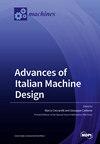Exploring the Impact of Passive Ankle Exoskeletons on Lower-Limb Neuromechanics during Walking on Sloped Surfaces: Implications for Device Design
IF 2.1
3区 工程技术
Q3 ENGINEERING, ELECTRICAL & ELECTRONIC
引用次数: 0
Abstract
Humans and animals navigate complex and variable terrain in day-to-day life. Wearable assistive exoskeletons interact with biological tissues to augment movement. Yet, our understanding of how these devices impact the biomechanics of movement beyond steady-state environments remains limited. We investigated how passive ankle exoskeletons influence mechanical energetics and neuromuscular control of the lower-limb during level, incline, and decline walking. We collected kinematic and kinetic measures to determine ankle, knee, and hip mechanics and surface electromyography to characterize muscle activation of lower-limb muscles while participants walked on level, incline, and decline surfaces (0°, +5°, and −5°) with exoskeletons of varying stiffnesses (0–280 Nm rad−1). Our results demonstrate that walking on incline surfaces with ankle exoskeletons was associated with increased negative work and power at the knee and increased positive work and power at the hip. These alterations in joint energetics may be linked to an additional requirement to load the springy exoskeleton in incline conditions. Decline walking with ankle exoskeletons had no influence on knee or hip energetics, likely owing to disrupted exoskeleton clutch actuation. To effectively offload the musculoskeletal system during walking on sloped surfaces, alterations to passive ankle exoskeleton clutch design are necessary.探索被动式踝关节外骨骼在斜面上行走时对下肢神经力学的影响:对设备设计的影响
人类和动物在日常生活中应对复杂多变的地形。可穿戴的辅助外骨骼与生物组织相互作用以增强运动。然而,我们对这些设备如何影响超出稳态环境的运动生物力学的理解仍然有限。我们研究了被动踝关节外骨骼在水平行走、倾斜行走和下降行走过程中如何影响下肢的机械能量学和神经肌肉控制。我们收集了运动学和动力学测量来确定踝关节、膝关节和髋关节力学,并收集了表面肌电图来表征参与者在水平、倾斜和下降表面(0°、+5°和- 5°)上行走时下肢肌肉的肌肉激活情况,外骨骼的刚度(0 - 280 Nm rad - 1)各不相同。我们的研究结果表明,在倾斜的表面上行走,踝关节外骨骼会增加膝盖的负功和力量,增加臀部的正功和力量。关节能量学的这些变化可能与在倾斜条件下加载弹性外骨骼的额外要求有关。踝关节外骨骼的衰退行走对膝关节或髋关节的能量没有影响,可能是由于外骨骼的离合器驱动被破坏。为了有效地卸载肌肉骨骼系统在斜坡上行走时,改变被动脚踝外骨骼离合器设计是必要的。
本文章由计算机程序翻译,如有差异,请以英文原文为准。
求助全文
约1分钟内获得全文
求助全文
来源期刊

Machines
Multiple-
CiteScore
3.00
自引率
26.90%
发文量
1012
审稿时长
11 weeks
期刊介绍:
Machines (ISSN 2075-1702) is an international, peer-reviewed journal on machinery and engineering. It publishes research articles, reviews, short communications and letters. Our aim is to encourage scientists to publish their experimental and theoretical results in as much detail as possible. There is no restriction on the length of the papers. Full experimental and/or methodical details must be provided. There are, in addition, unique features of this journal: *manuscripts regarding research proposals and research ideas will be particularly welcomed *electronic files or software regarding the full details of the calculation and experimental procedure - if unable to be published in a normal way - can be deposited as supplementary material Subject Areas: applications of automation, systems and control engineering, electronic engineering, mechanical engineering, computer engineering, mechatronics, robotics, industrial design, human-machine-interfaces, mechanical systems, machines and related components, machine vision, history of technology and industrial revolution, turbo machinery, machine diagnostics and prognostics (condition monitoring), machine design.
 求助内容:
求助内容: 应助结果提醒方式:
应助结果提醒方式:


